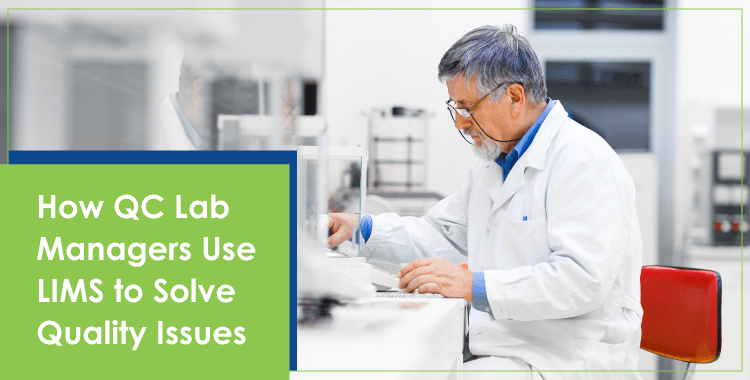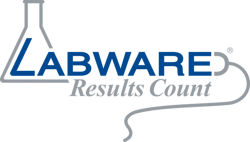
Today, in the rapidly changing lab setting, quality control of LIMS is essential for attaining precise and dependable analytical data. A robust Laboratory Information Management System (LIMS) not only streamlines workflows but also enhances the overall quality management system within an organization.
Throughout this blog post, you will discover how implementing a comprehensive LIMS can automate sample tracking for improved traceability and enable real-time monitoring of key performance indicators. Furthermore, we will explore how electronic capture methods enhance data integrity while reducing manual transcription errors and facilitating audit trails for regulatory compliance.
You'll also learn about the power of historical data analysis in identifying trends that lead to predictive analytics and proactive problem-solving. Additionally, we will discuss the importance of laboratory-wide precision through automated alerts on out-of-specification results and effective corrective actions plans. Lastly, understand how LIMS validation processes help achieve regulatory compliance by meeting documentation requirements for audits and streamlining change management processes.
By integrating these essential features into your existing operations, you can boost efficiency across departments while accelerating decision-making through real-time access to critical information – all thanks to a well-implemented LIMS quality control system.
Streamlining Quality Control with LIMS
A laboratory information management system (LIMS) can help quality control teams adhere to the most stringent standards by automating processes and providing real-time data analysis. Lab supervisors can rapidly detect and address any potential problems, thereby guaranteeing a superior level of exactness and productivity in their processes.
Automating Sample Tracking for Improved Traceability
LIMS streamlines sample tracking by automatically logging essential information such as sample ID, date received, storage location, and test results. This improved traceability not only ensures compliance with industry regulations but also helps prevent mix-ups or lost samples that could compromise product quality. By utilizing barcode scanning technology or RFID tags integrated into the LIMS software, laboratories can further enhance their sample tracking capabilities.
Real-Time Monitoring of Key Performance Indicators
The ability to monitor key performance indicators (KPIs) in real-time is crucial for maintaining an effective quality management system. With a LIMS solution in place, lab managers have access to up-to-date metrics on parameters like turnaround time, instrument utilization rates, and retest percentages. These insights enable them to make informed decisions about resource allocation or process improvements aimed at boosting overall laboratory performance.
Enhancing Data Integrity through Electronic Capture
Data integrity, which refers to the accuracy and consistency of data over its entire lifecycle, is a critical aspect of quality control within any laboratory setting. By capturing data electronically from laboratory instruments using a LIMS solution instead of manual entry methods, laboratories can minimize human error while ensuring timely data entry at regular timepoints. This not only helps maintain consistency across the entire lab but also enables easy access to historical data for trend analysis and continuous improvement efforts.
Reducing Manual Transcription Errors
Manual transcription of data from instruments or paper-based records is prone to errors, which can lead to inaccurate results and non-compliance issues. LIMS software automates this process by directly capturing instrument readings, thereby reducing the likelihood of transcription mistakes that could impact product quality or regulatory compliance.
Facilitating Audit Trails for Regulatory Compliance
Audit trails are essential in demonstrating compliance with industry regulations such as ISO 17025, FDA 21 CFR Part 11, and GxP guidelines. A well-implemented LIMS solution automatically generates audit trails that record all changes made to data within the system along with user information and timestamps. These comprehensive logs help laboratories demonstrate their commitment to maintaining a high level of quality control during audits while providing valuable insights into potential areas for improvement.
By implementing LIMS for quality control, organizations can benefit from improved traceability and real-time monitoring of key performance indicators. Additionally, electronic capture facilitates data integrity through reduced manual transcription errors and audit trails to meet regulatory compliance standards.
Key Takeaway: A LIMS system can streamline quality control processes by automating sample tracking, providing real-time monitoring of key performance indicators, enhancing data integrity through electronic capture, reducing manual transcription errors and facilitating audit trails for regulatory compliance. This helps laboratories maintain a high level of exactness and productivity in their processes while ensuring compliance with industry regulations.
Enhancing Data Integrity through Electronic Capture
Preserving the trustworthiness and correctness of data obtained is a critical component in sustaining an excellent laboratory setting. Laboratory Information Management Systems (LIMS) play a crucial role in this process by capturing data electronically from various laboratory instruments, thereby minimizing human error and enhancing overall data quality. This electronic capture ensures timely data entry at regular timepoints while also promoting consistency across the entire lab.
Reducing Manual Transcription Errors
One common source of errors in laboratories is manual transcription, where technicians must record instrument readings or test results on paper or spreadsheets. These manual processes can lead to inaccuracies due to illegible handwriting, misplaced decimal points, or simple typos. By automating this process with LIMS software, labs can significantly reduce these types of errors and ensure that their datasets are more reliable for analysis purposes.
Facilitating Audit Trails for Regulatory Compliance
In addition to reducing transcription errors, electronic capture through LIMS provides an easily accessible audit trail that helps maintain regulatory compliance. Many industries have strict guidelines regarding how long certain records must be kept and how they should be stored - requirements that can prove challenging when relying solely on paper-based systems. A comprehensive LIMS solution will store all relevant information digitally so it's readily available during audits or inspections.
Beyond meeting regulatory standards like ISO 17025 or FDA 21 CFR Part 11, electronic data capture through LIMS also facilitates internal quality management system (QMS) audits. By having all necessary information readily available, lab managers can quickly identify areas for improvement and implement corrective actions as needed.
Some key benefits of using a LIMS to enhance data integrity include:
- Improved accuracy by eliminating manual transcription errors
- Easier access to historical data for trend analysis and continuous improvement efforts
- Audit trails that support regulatory compliance and internal QMS audits
- Better overall consistency across the entire laboratory environment
In today's fast-paced, highly regulated laboratory settings, ensuring the highest level of data integrity is essential. Implementing a robust LIMS solution with electronic capture capabilities not only helps labs meet these stringent standards but also streamlines processes and improves overall efficiency - ultimately leading to better outcomes for both organizations and their customers.
The use of electronic capture for data integrity provides the accuracy and reliability needed to ensure compliance with regulations, while reducing manual transcription errors. With historical data analysis, organizations can identify trends in order to proactively solve problems and benchmark against industry best practices.
Key Takeaway: Laboratory Information Management Systems (LIMS) play a vital role in enhancing data integrity by electronically capturing data from various laboratory instruments, reducing manual transcription errors and facilitating audit trails for regulatory compliance. Implementing a robust LIMS solution with electronic capture capabilities helps labs meet stringent standards, streamline processes, improve overall efficiency and ultimately leads to better outcomes for both organizations and their customers.
Identifying Trends with Historical Data Analysis
A Laboratory Information Management System (LIMS) can provide valuable insights into trends that might otherwise go unnoticed by tracking and analyzing historical data over time. Lab managers can use this information to make informed decisions about process improvements or equipment upgrades aimed at enhancing overall quality levels. In this section, we will discuss how LIMS facilitates predictive analytics for proactive problem-solving and benchmarking against industry best practices.
Predictive Analytics for Proactive Problem-Solving
One of the key benefits of using a LIMS is its ability to perform predictive analytics, which involves identifying patterns in historical data to forecast future events or behaviors. By leveraging advanced algorithms and machine learning techniques, lab managers can proactively identify potential issues before they escalate into significant problems. For example, a LIMS may detect an unusual increase in out-of-specification results from a specific instrument, prompting further investigation and maintenance before it impacts product quality.
Benchmarking Against Industry Best Practices
In addition to predictive analytics, a LIMS also enables laboratories to benchmark their performance against industry best practices through the analysis of historical data. This allows lab managers to compare their operations with those of other organizations within the same sector or across different industries, helping them identify areas where improvements could be made.
- Data-driven decision-making: With access to comprehensive datasets on various aspects of laboratory operations - such as turnaround times, error rates, and resource utilization - lab managers can make more informed decisions based on actual performance metrics rather than relying solely on intuition or anecdotal evidence.
- Continuous improvement: Benchmarking provides an objective measure of success, allowing lab managers to track their progress over time and identify trends that may indicate the need for changes in processes, equipment, or personnel. This fosters a culture of continuous improvement within the organization.
- Competitive advantage: By adopting industry best practices and striving for excellence in all aspects of laboratory operations, organizations can differentiate themselves from competitors and enhance their reputation as leaders in quality control.
In summary, leveraging historical data analysis through a LIMS enables laboratories to proactively address potential issues before they impact product quality while also benchmarking against industry best practices. This not only helps improve overall operational efficiency but also ensures that labs remain at the forefront of innovation and regulatory compliance.
By leveraging historical data analysis, LIMS Quality Control can identify trends in laboratory operations and provide a proactive approach to problem-solving. Automated alerts on out-of-specification results allow for effective quality control monitoring that ensures precision across the entire laboratory environment.
Key Takeaway: A LIMS can analyze historical data to identify trends and patterns, allowing lab managers to make informed decisions about process improvements or equipment upgrades. Predictive analytics can proactively detect potential issues before they escalate into significant problems, while benchmarking against industry best practices fosters a culture of continuous improvement and provides a competitive advantage for organizations.
Ensuring Laboratory-Wide Precision with Quality Control Monitoring
A Laboratory Information Management System (LIMS) plays an essential role in maintaining precision throughout the entire laboratory by continuously monitoring various aspects of quality control. The software detects deviations from set parameters, allowing lab managers to take corrective action promptly before it impacts product quality or leads to non-compliance issues. This proactive approach ensures that laboratories operate at peak efficiency and consistently deliver accurate results.
Automated Alerts on Out-of-Specification Results
LIMS can be configured to automatically send alerts when test results fall outside predetermined specifications. These notifications enable lab personnel to quickly identify potential problems and initiate appropriate actions without delay. For example, if a sample's pH level is found to be out of range, the LIMS will notify relevant staff members so they can investigate the issue further and determine whether retesting or other corrective measures are necessary.
- Error reduction: Automated alerts help minimize human error by reducing reliance on manual data entry and review processes.
- Faster response times: Real-time notifications allow for immediate action upon detection of out-of-specification results, preventing delays in addressing potential issues.
- Better decision-making: With access to accurate information about ongoing quality concerns, lab managers can make informed decisions regarding process improvements or equipment upgrades.
Implementing Effective Corrective Actions Plans
In addition to identifying problems as they arise, a robust LIMS also facilitates the development and execution of effective corrective actions plans (CAPs). By providing a centralized platform for tracking CAP progress and outcomes, LIMS streamlines communication between team members and ensures that all necessary steps are taken to resolve identified issues.
- Root cause analysis: LIMS can help identify the underlying causes of quality problems, enabling lab managers to address these issues at their source and prevent recurrence.
- Action plan development: With a clear understanding of root causes, teams can develop targeted CAPs designed to address specific concerns and improve overall laboratory performance.
- Monitoring progress: As corrective actions are implemented, LIMS tracks their effectiveness in real-time, allowing for ongoing adjustments as needed to achieve desired results.
In today's competitive landscape, maintaining high levels of precision across all aspects of laboratory operations is crucial. By leveraging advanced features such as automated alerts on out-of-specification results and streamlined CAP implementation processes, a Laboratory Information Management System helps ensure that your organization consistently meets or exceeds industry standards for quality control. This not only safeguards product integrity but also protects your reputation among customers and regulatory agencies alike.
By implementing automated alerts on out-of-specification results and effective corrective action plans, laboratory-wide precision can be ensured through quality control monitoring. To further enhance regulatory compliance, it is important to streamline change management processes by validating LIMS systems.
Key Takeaway: A LIMS is crucial for maintaining precision in the laboratory by continuously monitoring quality control and detecting deviations from set parameters. Automated alerts on out-of-specification results help minimize human error, reduce response times, and facilitate effective corrective action plans to address specific concerns and improve overall laboratory performance.
Achieving Regulatory Compliance through LIMS Validation Processes
A well-implemented laboratory information management system (LIMS) is optimized and validated out-of-the-box according to relevant industry regulations such as ISO 17025, FDA 21 CFR Part 11, and GxP guidelines. By adhering to these standards, lab managers can ensure that their laboratory operates within the required compliance framework while minimizing the risk of costly regulatory violations.
Meeting Documentation Requirements for Audits
LIMS helps laboratories meet documentation requirements by maintaining a comprehensive audit trail of all activities performed in the system. This includes capturing data electronically from instruments, recording user actions, tracking sample history, and documenting any changes made to processes or procedures. The electronic records generated by LIMS are secure, tamper-proof, and time-stamped - ensuring full traceability during audits conducted by regulatory bodies like the FDA or ISO assessors.
Streamlining Change Management Processes
In addition to meeting documentation requirements for audits, a robust LIMS also streamlines change management processes within the laboratory environment. Whenever there is a need for process modification or equipment upgrade due to new regulations or continuous improvement efforts, LIMS allows lab managers to easily implement these changes while maintaining proper version control over standard operating procedures (SOPs), test methods, specifications, and other critical documents.
- Version Control: LIMS provides a centralized repository for all laboratory documents, ensuring that only the most current and approved versions are accessible to users. This eliminates confusion caused by outdated or unauthorized copies of critical documentation.
- Approval Workflows: By automating approval workflows, LIMS ensures that any changes made to SOPs or other controlled documents undergo proper review and sign-off before being implemented in the lab environment.
- Training Management: When new processes or equipment are introduced, it is essential to ensure that staff members receive appropriate training. A LIMS can track employee training records and send notifications when refresher courses or additional certifications are required.
Achieving regulatory compliance through effective validation processes is crucial for laboratories operating within regulated industries such as pharmaceuticals, medical devices, food & beverage production, and environmental testing. Implementing a comprehensive quality management system like LabWare's Laboratory Information Management System not only helps labs meet these stringent requirements but also enables them to streamline operations while maintaining data integrity - ultimately leading to improved efficiency and cost savings across the organization.
By implementing LIMS validation processes, organizations can ensure that they are meeting all regulatory requirements and minimizing the risk of non-compliance. Additionally, with the integration and automation capabilities of a LIMS system, companies can further optimize their operations by streamlining collaboration between departments and making data-driven decisions quickly.
Key Takeaway: A well-implemented LIMS can help laboratories achieve regulatory compliance and minimize the risk of costly violations by adhering to industry standards. It also helps labs meet documentation requirements for audits, streamline change management processes, and maintain data integrity - ultimately leading to improved efficiency and cost savings across the organization.
Boosting Efficiency with LIMS Integration and Automation
In this day and age, with the speed of laboratory operations, productivity is essential to stay ahead in the game. Integrating your laboratory information management system (LIMS) with other systems such as enterprise resource planning (ERP) software or manufacturing execution systems (MES) can significantly improve the overall efficiency of your organization by streamlining communication between different departments.
Simplifying Cross-Departmental Collaboration
When a LIMS is integrated with ERP or MES solutions, it enables seamless data flow across various departments within an organization. This streamlined communication helps reduce manual tasks and fosters collaboration among team members to address quality issues more effectively. For example, when a quality control issue arises in the lab, relevant personnel from production and supply chain teams can access real-time data through their respective systems to quickly identify the root cause and implement corrective actions.
Accelerating Decision-Making Through Real-Time Data Access
LIMS integration also allows decision-makers to access critical laboratory data in real-time, enabling them to make informed decisions based on accurate information. With instant access to up-to-date sample tracking records, test results, and trend analyses provided by LIMS integrations like LabWare Connectors, managers can proactively monitor key performance indicators (KPIs), identify potential bottlenecks or inefficiencies in processes early on, and take appropriate measures before they escalate into significant problems.
- Data-driven insights: By integrating LIMS with other business-critical applications such as ERP or MES platforms that manage inventory levels or production schedules, organizations gain valuable insights into how specific variables impact product quality over time.
- Automated workflows: Integration with LIMS can help automate routine tasks such as sample registration, test assignment, and result reporting. This not only saves time but also reduces the risk of human error associated with manual data entry.
- Better resource allocation: Real-time access to laboratory data enables managers to optimize resources more effectively by identifying areas where additional personnel or equipment may be needed for optimal performance.
In addition to integration capabilities, modern LIMS solutions offer a range of automation features that further enhance efficiency in the lab. For instance, automated alerts on out-of-specification results ensure timely identification and resolution of issues before they impact product quality or lead to non-compliance penalties. Similarly, implementing effective corrective action plans becomes easier when you have an integrated system that tracks all relevant information from multiple sources and provides actionable insights based on real-time data analysis.
To sum up, integrating your LIMS with other business systems like ERP or MES software is crucial for boosting efficiency within your organization. By simplifying cross-departmental collaboration and accelerating decision-making through real-time data access, organizations can stay ahead in today's competitive landscape while maintaining high levels of quality control across their operations.
Key Takeaway: Integrating your LIMS with other business systems like ERP or MES software can significantly improve the overall efficiency of your organization by streamlining communication between different departments, simplifying cross-departmental collaboration and accelerating decision-making through real-time data access. This allows organizations to stay ahead in today's competitive landscape while maintaining high levels of quality control across their operations.
FAQs in Relation to Lims Quality Control
What is the Role of LIMS in Quality Control?
The role of Laboratory Information Management Systems (LIMS) in quality control is to streamline laboratory processes, ensure data integrity, and maintain regulatory compliance. LIMS automates sample tracking, monitors key performance indicators, reduces manual transcription errors, facilitates audit trails, and provides predictive analytics for proactive problem-solving.
Is LIMS a Quality Management System?
LIMS can be considered a component of a larger Quality Management System (QMS). While QMS focuses on overall organizational policies and procedures to ensure product or service quality, LIMS specifically manages laboratory workflows and data handling to support efficient operations and accurate results within the lab environment.
What is Quality Control in Laboratory Management?
Quality control in laboratory management refers to the systematic monitoring of processes and procedures that ensures accurate test results are produced consistently. This includes implementing standard operating procedures (SOPs), maintaining equipment calibration records, validating methods used for testing samples (source), and analyzing historical data trends for continuous improvement efforts.
Is LIMS GMP Compliant?
A well-designed LIMS can be configured to meet Good Manufacturing Practice (GMP) requirements by providing features such as electronic signatures (source), audit trails, and documentation capabilities needed during inspections from regulatory bodies like FDA or EMA, ensuring proper validation protocols are followed throughout the entire lifecycle.
Conclusion
Overall, implementing a Laboratory Information Management System (LIMS) quality control system can greatly benefit laboratories by improving traceability, enhancing data integrity, identifying trends through historical data analysis, ensuring precision with monitoring and corrective action plans, achieving regulatory compliance through validation processes, and boosting efficiency with integration and automation.
By utilizing the various features of a LIMS quality management system outlined above, laboratories can streamline their operations while maintaining high levels of accuracy and compliance.
If you're interested in learning more about how LabWare's LIMS solutions can improve your laboratory's quality control processes, contact us today.
















